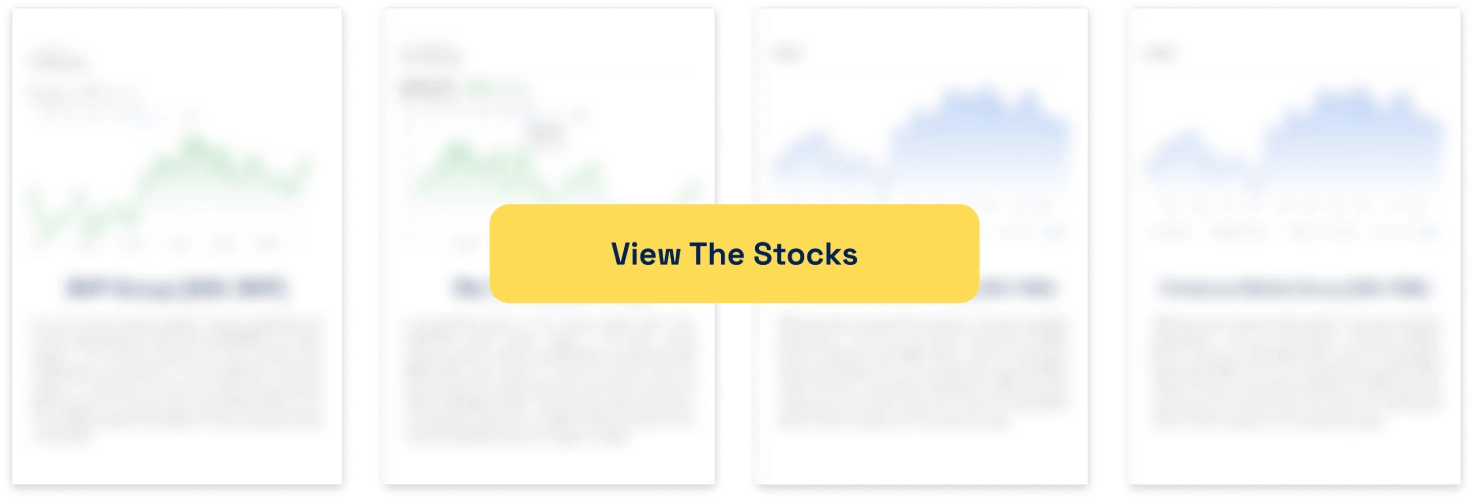3 years since Block shares listed on the ASX: It was set to soar new heights in 2025, until Trump’s tariffs
![]() Nick Sundich, November 7, 2025
Nick Sundich, November 7, 2025
The Afterpay acquisition was not just noteworthy because it was the biggest corporate takeover in Australian history, but also because Block shares listed on the ASX rather than just snapping up Afterpay shares and never to be heard from again.
Shares in the Jack Dorsey-founded company (which since early January 2025 have traded under the ticker XYZ rather than SQ and SQ2 in conjunction with its name change) have been underwater for most of its listed tenure due to the Tech Wreck.
Block’s shares are down 36% from when it dual-listed on the ASX. The Tech Wreck and Trump’s tariffs were major hits, although there has been a slight recovery in recent months. Where to now?
What are the Best ASX Stocks to invest in right now?
Check our buy/sell tips
Why are Block shares listed on the ASX?
Because, as noted above, it acquired Afterpay. And the deal was paid in its own shares rather than cash, because it lacked the cash reserves to pay in that way.
Block shares on the ASX are listed as CDIs (Chess Depository Indices), as are most of the US companies with dual listings on the ASX. Unlike many others, Block CDIs are strictly 1:1 – 1 CDI represents 1 ordinary share in the company. We’re not talking about a distinction without a difference here because CDIs are not shares.
Who is Block?
Block is a US fintech, formerly known as Square, founded by Jack Dorsey in 2009. Dorsey founded Twitter just 3 years earlier, but was inspired to start Block after a friend of his couldn’t complete a $2,000 sale of glass faucets and fittings because the other party could not accept credit cards.
Block has two main parts to its business. Its Seller business manages payments and lends money to merchants and its Cash App that allows consumers to transfer, spend and invest money. The latter has over 50m Monthly Active Users while the former is used by over 30% of US small businesses. And of course, it has Afterpay.
The company’s vision is to,’ Increase access to the economy’.
One App to rule them all?
In buying Afterpay, Block made Afterpay as a payment method in both apps. Block has also made forays into crypto, with a business called TBD that is focused on creating crypto developer tools. Its Cash App also supports bitcoin. Finally, it owns Tidal, a music streaming platform founded by Jay-Z. The jury is still out on how it fits into the company’s boarder business strategy.
The company has benefited from the shift of transactions from physical cash into the digital world. It generated US$228bn in Gross Payment Volume in 2024. This was wafer-thin growth from the $227.7bn in 2023, although 2023 was 12% higher than $203.5bn in 2022.
2024 was solid
At the start 0f 2025, investors were confident in the company, thinking that rate cuts were certain and that they accelerate growth. The 2024 results were nothing to snuff at. Revenue for 2024 came in at US$24.1bn, up 10% from 2023. It made EPS of $3.37, up from $1.67 a year before. US stocks focus more on EPS rather than profit, because share buybacks sure help with a company’s EPS. But investors did not like the result because they ‘missed consensus [estimates]’.
The company’s objectives include profitable growth and to achieve the so-called ‘Rule of 40‘ in 2026. For CY25: It had guided to a $10.2bn gross profit (up 15%), adjusted operating income of $2.1bn (a margin of 21%) and a 35.5% Rule of X (in other words, to get to 35.5% of the 40% of the Rule of 40). This was updated to $10.2bn gross profit and an operating margin of 20% at its Q2 results.
Growth ahead?
The company purports to have penetrated less than 5% of its market and that the market keeps expanding. It claims that there is a US$75bn opportunity for the Cash App and $130bn for the Business Division (which it calls Square). The Cash App is predominantly used by Millennials and Gen Z, although it is only 34% and 25% penetrated in those demographics.
Unfortunately, the Tech Wreck meant that investors went cold on ‘growth at any cost’ companies, in other words, companies that are not profitable. Just when things looked to be turning around with a solid last quarter of 2024, Trump’s tariffs unleashed chaos and uncertainty on the world.
The company’s Q3 2025 results led to shares falling 11%. Yes, there was growth in gross profit in its Square segment, but just 9% vs 16% a year ago. Bitcoin revenue fell to $1.97bn from $2.43bn. ‘Adjusted net income’ was 54c per share compared to consensus of 67c. Sluggish consumer spending was cited as a contributing factor.
While not hiding away from the short-term, Block again promised the long-term looked better and that it was addressing key areas that would drive accelerated growth including attracting teens and families to the cash app, making controls in the Cash App that ‘unintentionally disrupted good customers’ and increasing high-ROI marketing spend. But the more investors hear this and don’t see it…the more they keep sceptical.
Block is one to watch
Consensus estimates for 2025 call for US$24.8bn in revenue and $2.33 EPS, up 3% and down 49% respectively. For CY26, $27.4bn revenue and $3.09 EPS. Then in CY27, $29.6bn revenue and $4.13 EPS. NYSE analysts, of which there are 38 of them, call for a share price of US$88.51, a 20% premium to the current share price.
It must be admitted that there is a divergence of opinion with the lowest estimate being US$58 per share and the highest US$105 per share. But these estimates place the company at just 10.3x EV/EBITDA, 19.9x P/E and 1.1x PEG.
We think investors need only look at the example of Life360 (ASX:360) to show that US-headquartered companies on the ASX can re-rate if they can deliver profitable growth. So Block could be a ‘buy the dip’ opportunity right now.
Unfortunately, its growth is slowing and this is why the share price has not reached its early 2022 highs again. With too many other high-growth opportunities out there, we would avoid this one for the time being.
Blog Categories
Get Our Top 5 ASX Stocks for FY26
Recent Posts
Webjet Sinks 22 Percent After Softer H1 Results and Weak Domestic Demand
Webjet Falls 22 Percent After H1 Revenue Dips and Domestic Flight Demand Softens Webjet (ASX: WJL) opened down 22 percent…
Javelin Minerals Jumps 2,900 Percent on Capital Consolidation
A Sharper Share Register Sets Javelin Minerals Up for Its Next Corporate Stage Javelin Minerals (ASX: JAV) surged an extraordinary…
Why Are Droneshield Shares Dropping and Should You Be Worried
DroneShield Selloff Tests Nerves, But Fundamentals Tell a Different Story DroneShield (ASX: DRO) experienced a sharp selloff this morning that…



